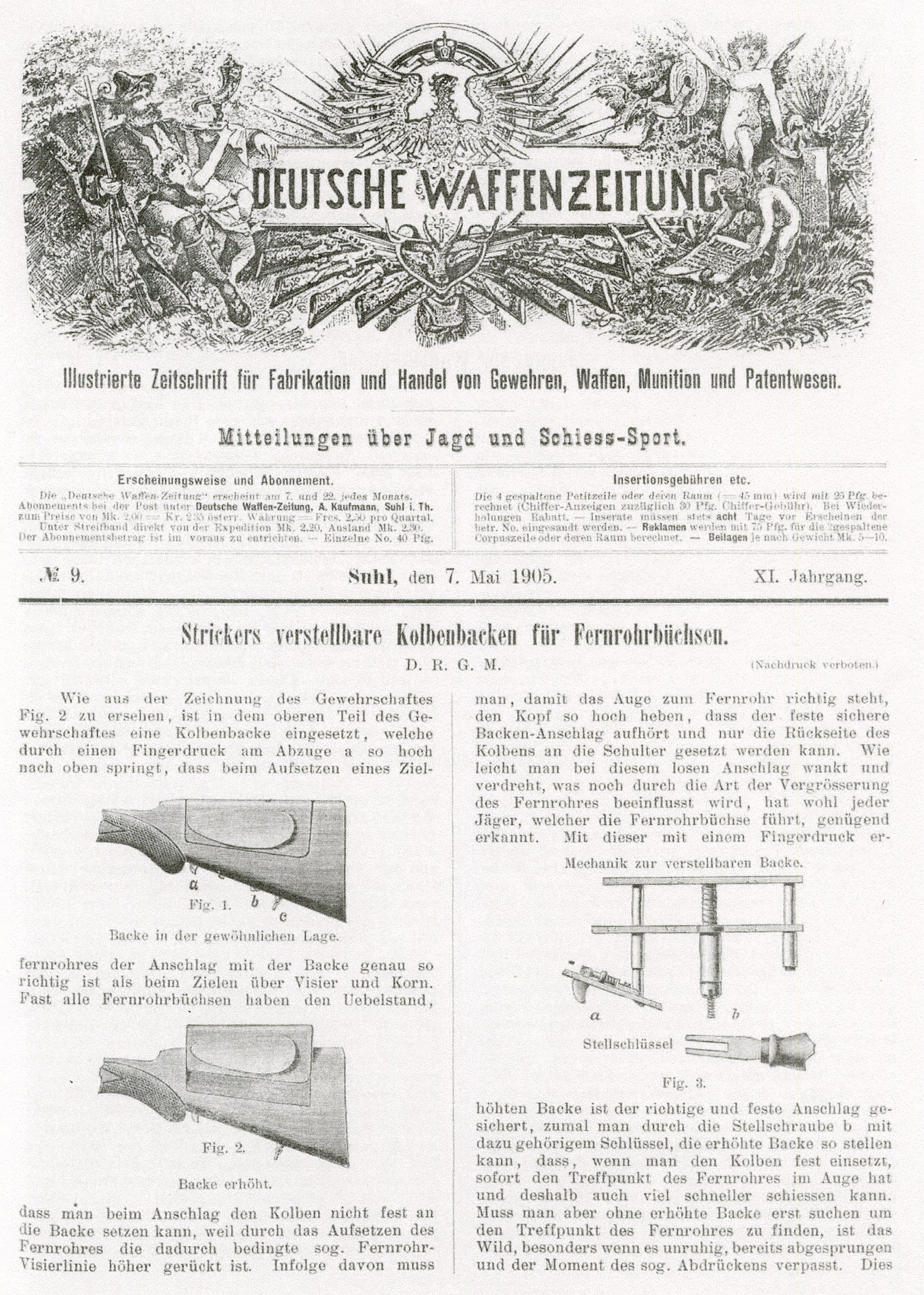By Dr. Karsten Eden & Larry B. Schuknecht
The following biography was researched and written by Dr. Karsten Eden.
To avoid any confusion it is important to note here that there was also a Friedrich Karl von Witzleben (July 31, 1864-Sept. 27, 1947) who was was a career Military officer being a German Lieutenant General, ministerial councilor and director of the Berlin Main Supply Office. LBS
Friedrich Carl von Witzleben was born in 1834. His father, Carl Ludwig von Witzleben was an aristocrat of the Oldenburg line of the von Witzleben family and was a juris doctor, employed as a district administrator (Landrat) in the Duchy of Oldenburg, Germany.
Friedrich Carl von Witzleben simply went by the name Carl von Witzleben. He studied engineering in Berlin. His professional career is documented as early as 1870 in a chemical engineering journal where he published a technical article on the improvement of the chemical process of sugar refining. Over the years numerous technical articles in leading engineering journals would follow. He is also accredited with several national and international patents in the field of chemical engineering and mechanical engineering, all related to sugar refining. Some of the patents are still used today.
Since 1870 Carl von Witzleben is named as a director of the L. Jacobs sugar refinery in Potsdam, Germany. The “Jacobsche Zuckerfabrik” was founded in 1826 by Ludwig Jacob and was the largest and most modern sugar refinery in Germany. During its height the company had about 500 employees.
Ludwig Jacob was the Chief Executive Officer of the company but at least from 1870 onwards Carl von Witzleben was named as the Chief Operations Officer of the sugar plant. Ludwig Jacob was very well respected by King Friedrich Wilhelm IV which resulted in the award of knighthood. Carl von Witzleben was a thriving young aristocrat and engineer who prospered during the industrial revolution in Germany and that also impressed King Friedrich Wilhelm IV. Both Ludwig Jacob and Carl von Witzleben were often invited by the King to wild boar hunts around Potsdam and Berlin and both enjoyed their social status and rank in society.
When Ludwig Jacobs passed away in 1879 his wife became the owner of the sugar plant, and his son became the CEO. Carl von Witzleben continued in his role as COO and Chief Engineer as documented in the address book of Potsdam from 1882. The “Jacobsche Zuckerfabrik” closed its doors in 1897.
Subsequently, Carl von Witzleben retired. He was about 63 years old. Carl’s passion was hunting and as an engineer it was only natural to him to improve the mechanical aspects of firearms and ammunition. His first patent in the firearms field was granted in 1885. It was for an adjustable illuminating mirrored sight that significantly improved hunting in the dark, especially hunting wild boars.
In 1896 Carl von Witzleben was granted a patent in the United Kingdom for the invention of a slug that had a linoleum projectile, but he is best known for his “Witzlebensche Bolzengeschoss”, an invention for a slug with a wooden or light metal projectile. This was patented in 1897 in Imperial Germany.
Carl von Witzleben married Anna Magarethe von Witzleben In 1863. The couple had one son, Max von Witzleben, who was born in 1873. Carl von Witzleben passed away on July 17th, 1909 in Potsdam. He was 75 years old.
The first image we show is the U. S. Patent no. 128,440 issued to him in 1872.
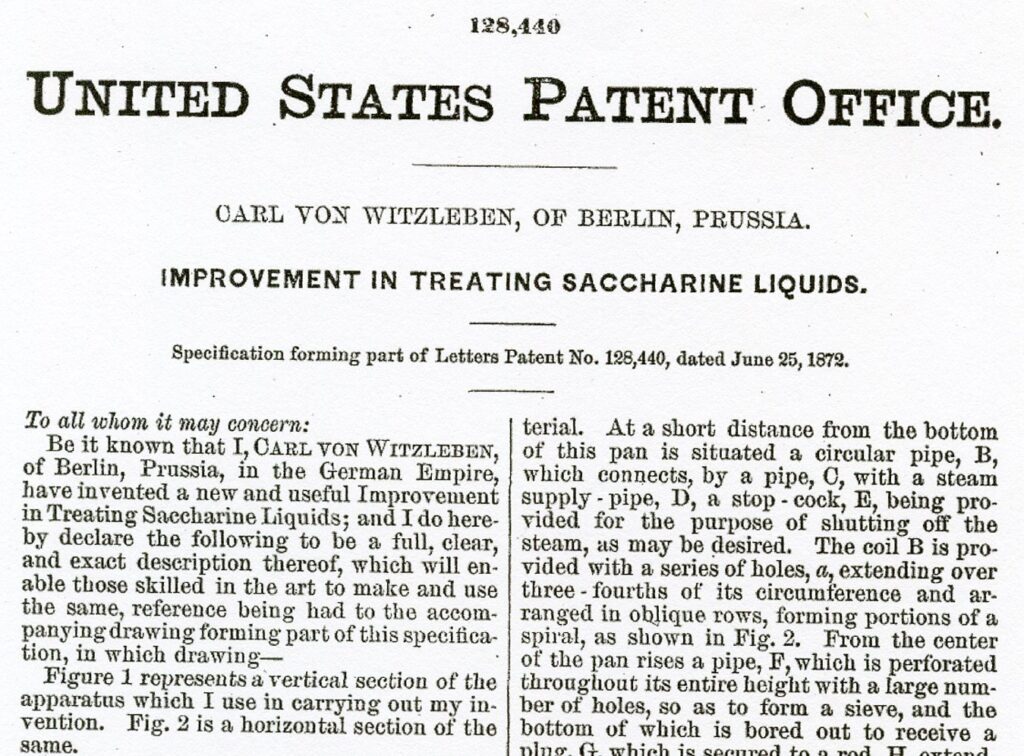
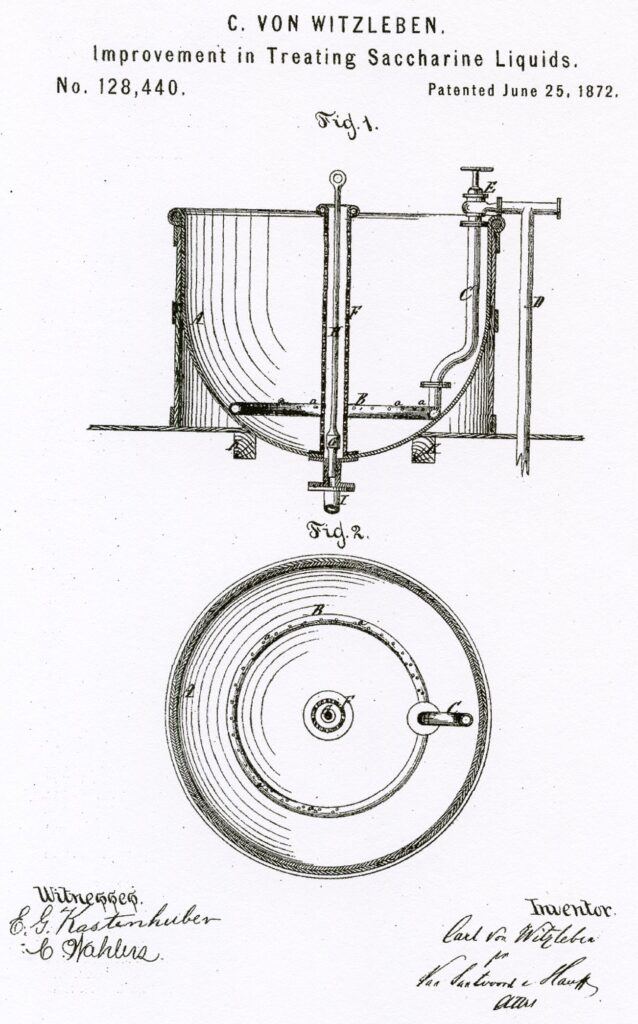
Next we have the German patent (D. R.P. ) no. 36218 issued to him in 1885 for the improvement of a rear sight as mentioned in Dr. Eden’s biography.
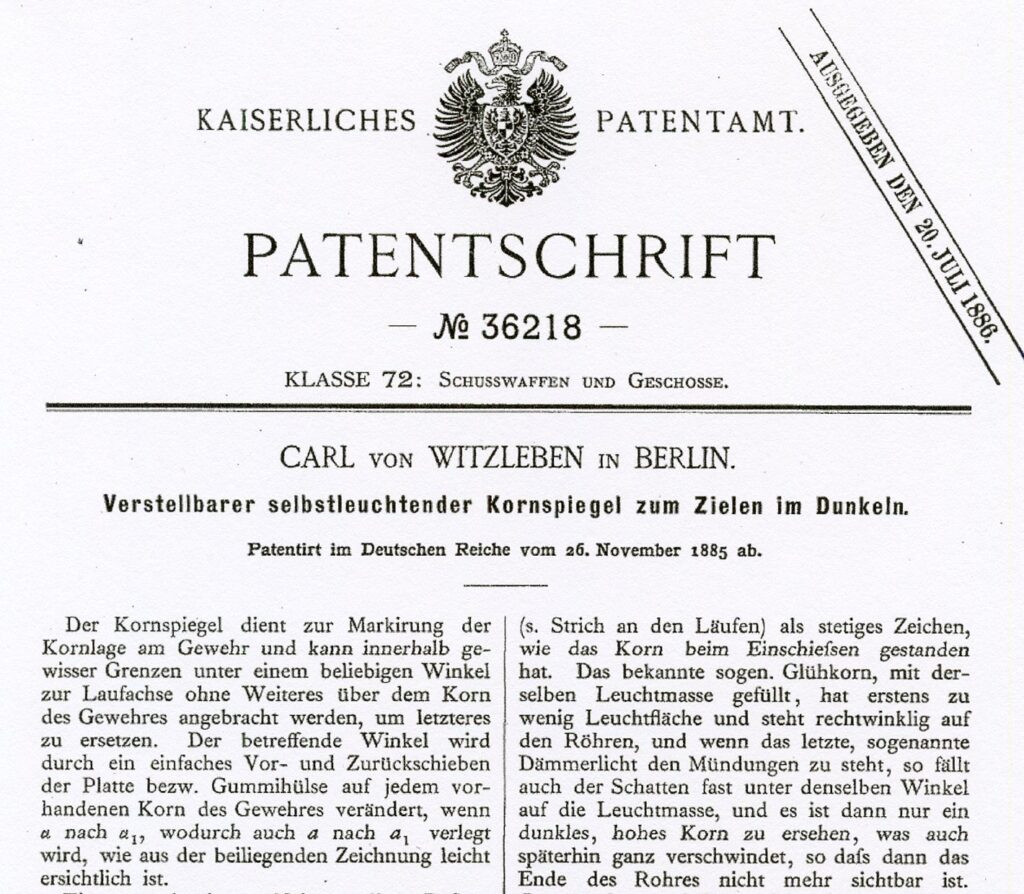
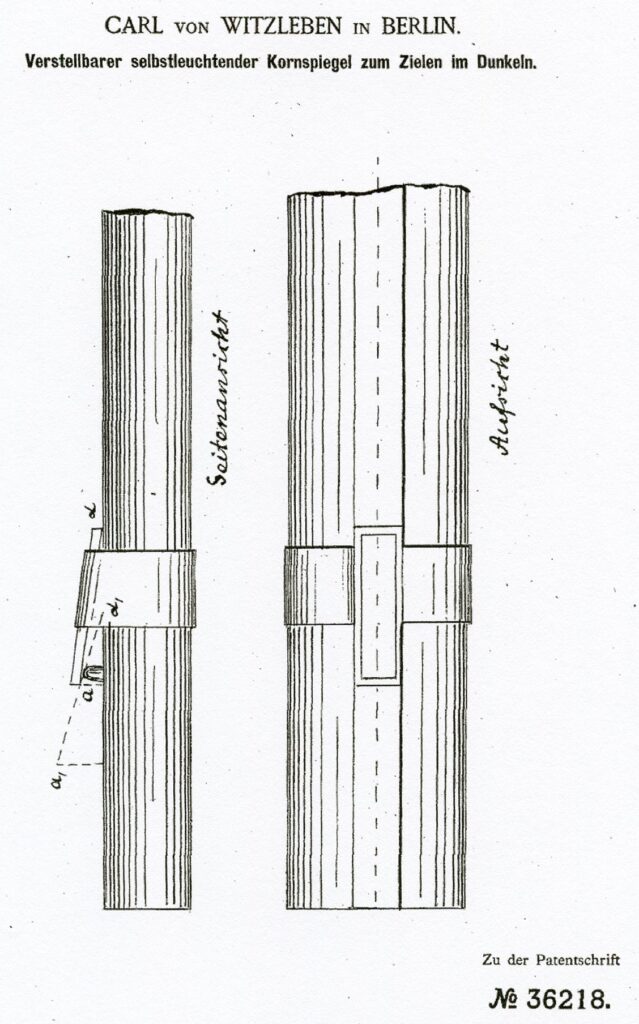
Now we come to his first Shotgun Slug patent, no. 73672
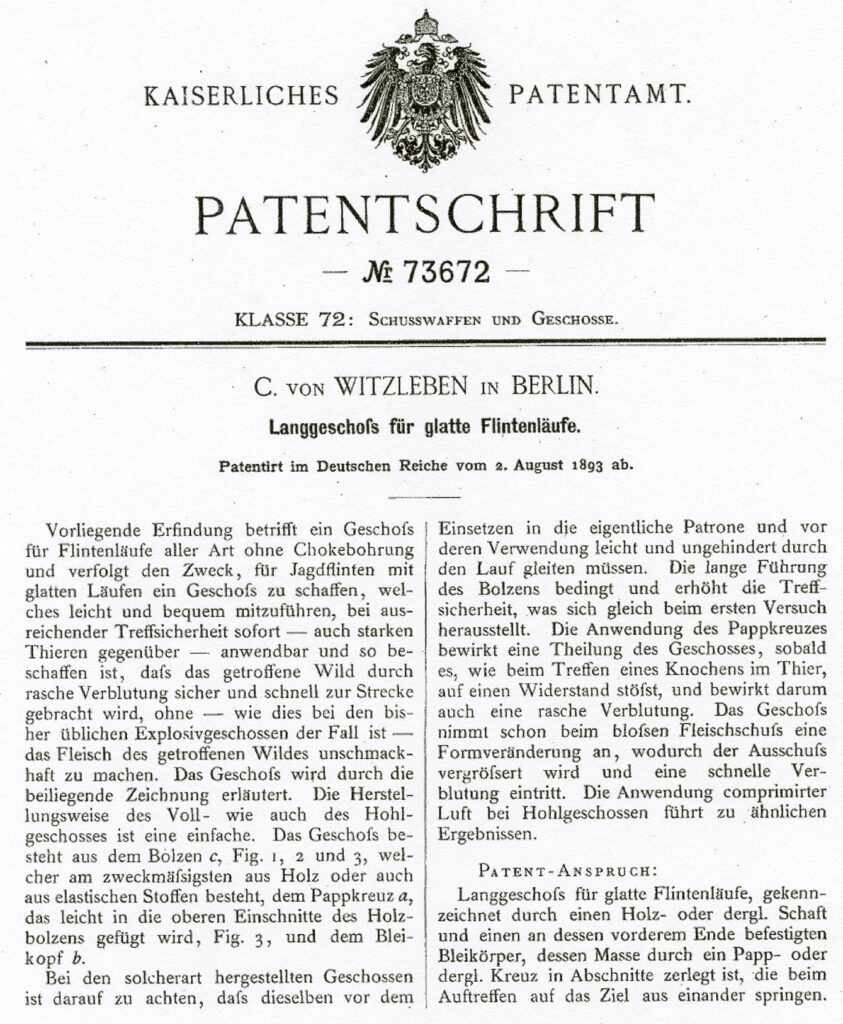
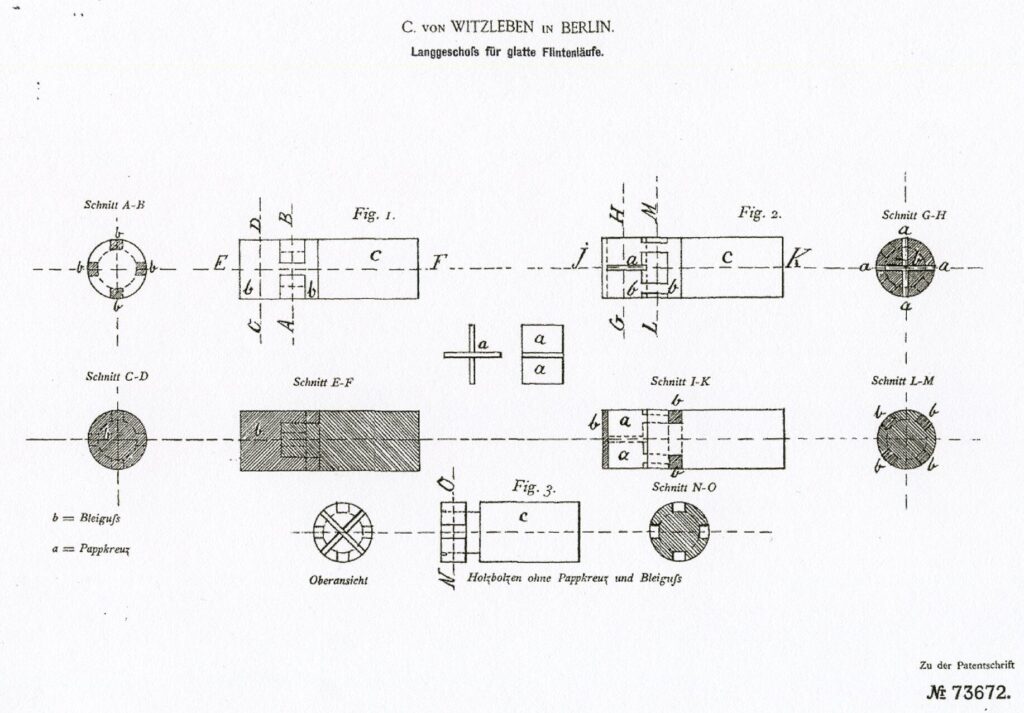
The following article about Carl von Witzleben’s slug development appeared in the january 10, 1895 isse of Der Deutsche Jäger. It is followed by a second story about the Witzeleben slug which appeared in the February 20, 1895 edition of the Der Deutsche Jäger.
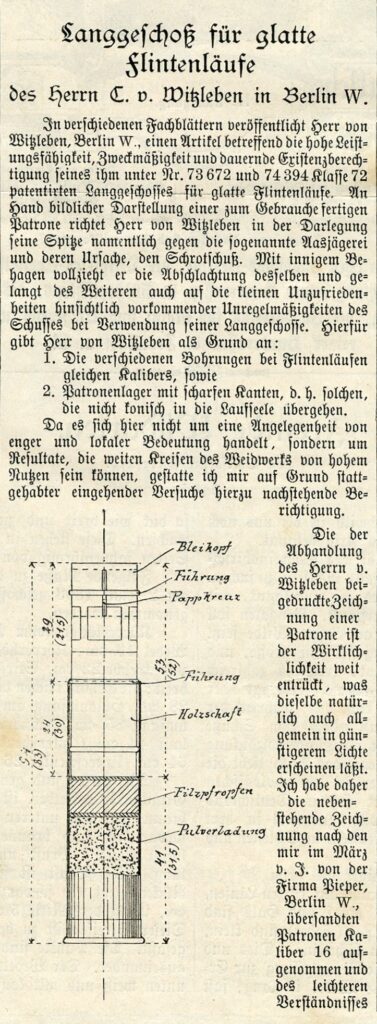
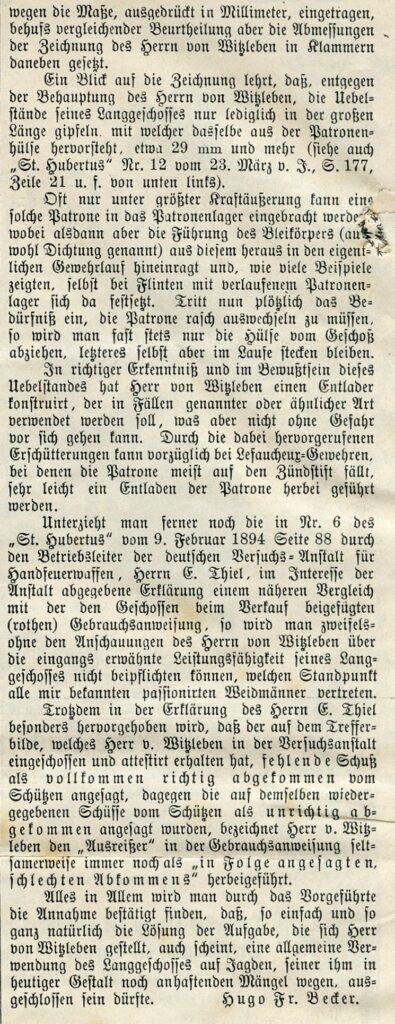
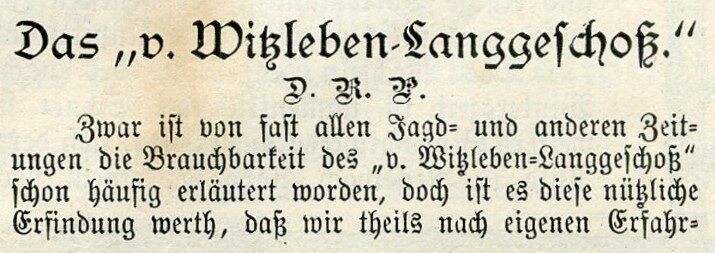
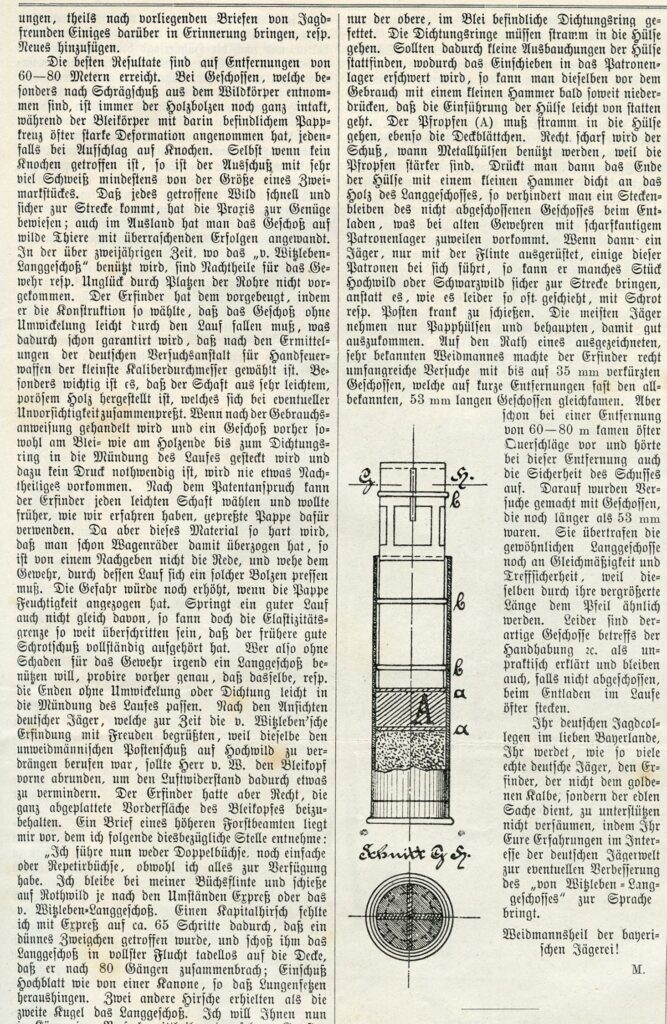
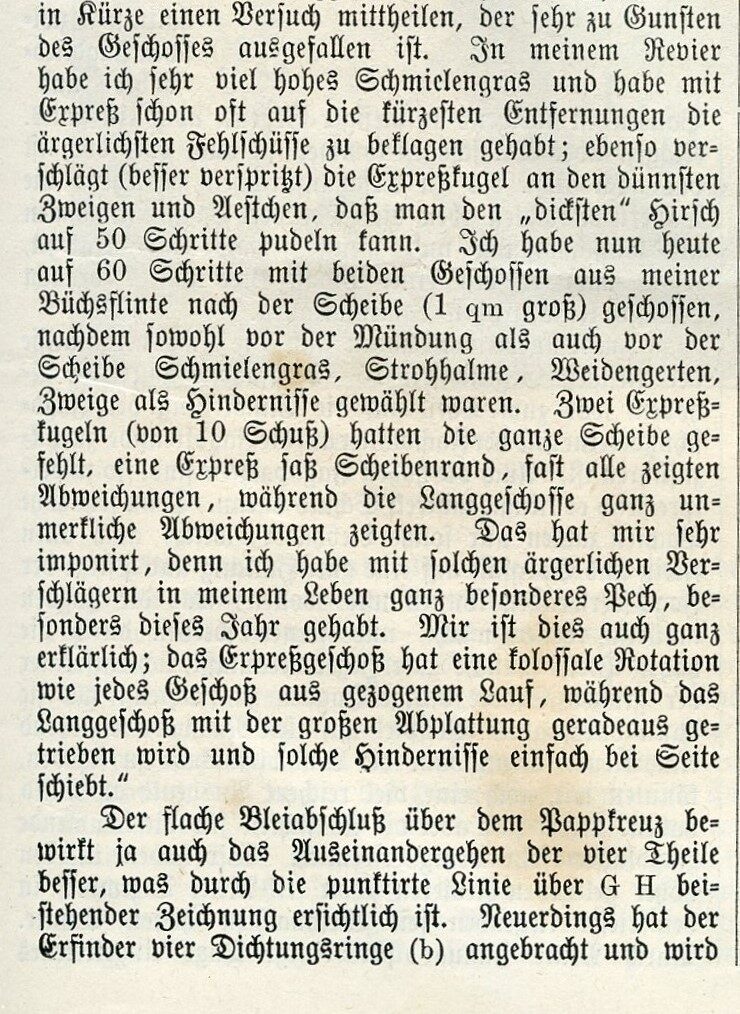
The next German patent (D. R. P. ) no. 96460 for the improvements made to the Witzeleben slug may have been assigned to the Gustav Genschow & Co..
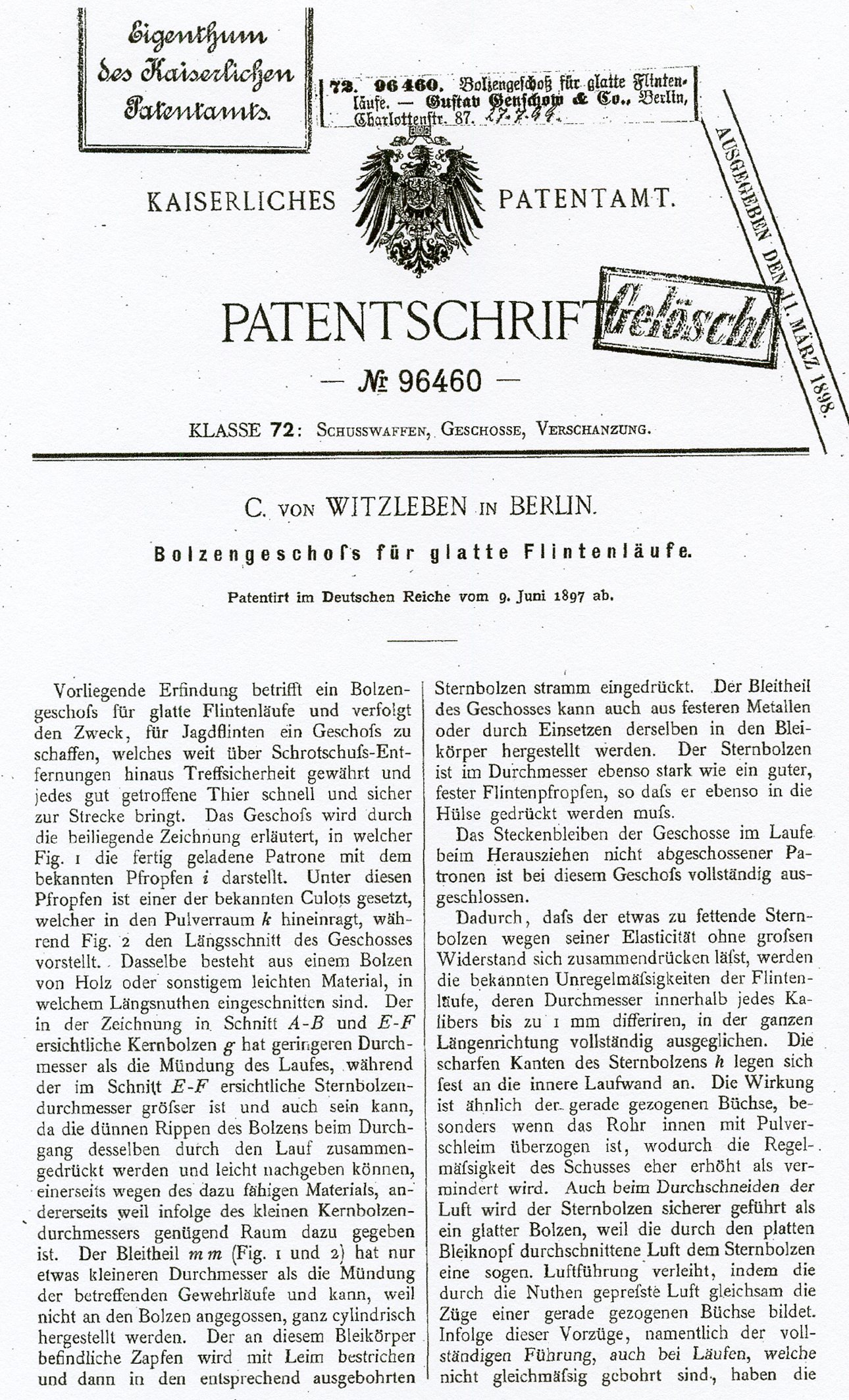

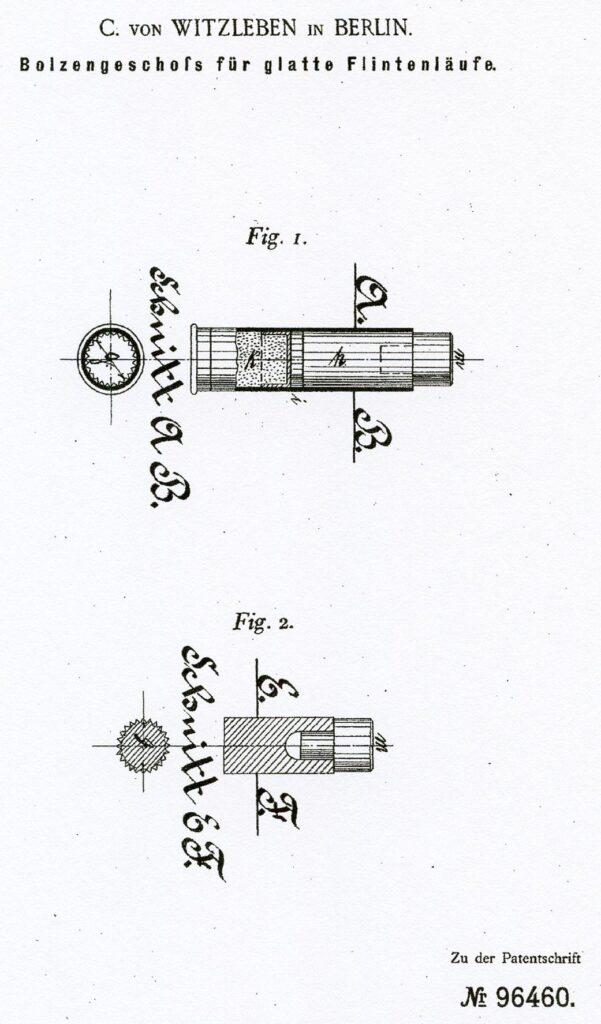
Below are the two British patents issued to Carl v. Witzeleben and Max Thorn. From them we learn that Carl lived at 29 Frobenstrasse, Berlin, W.
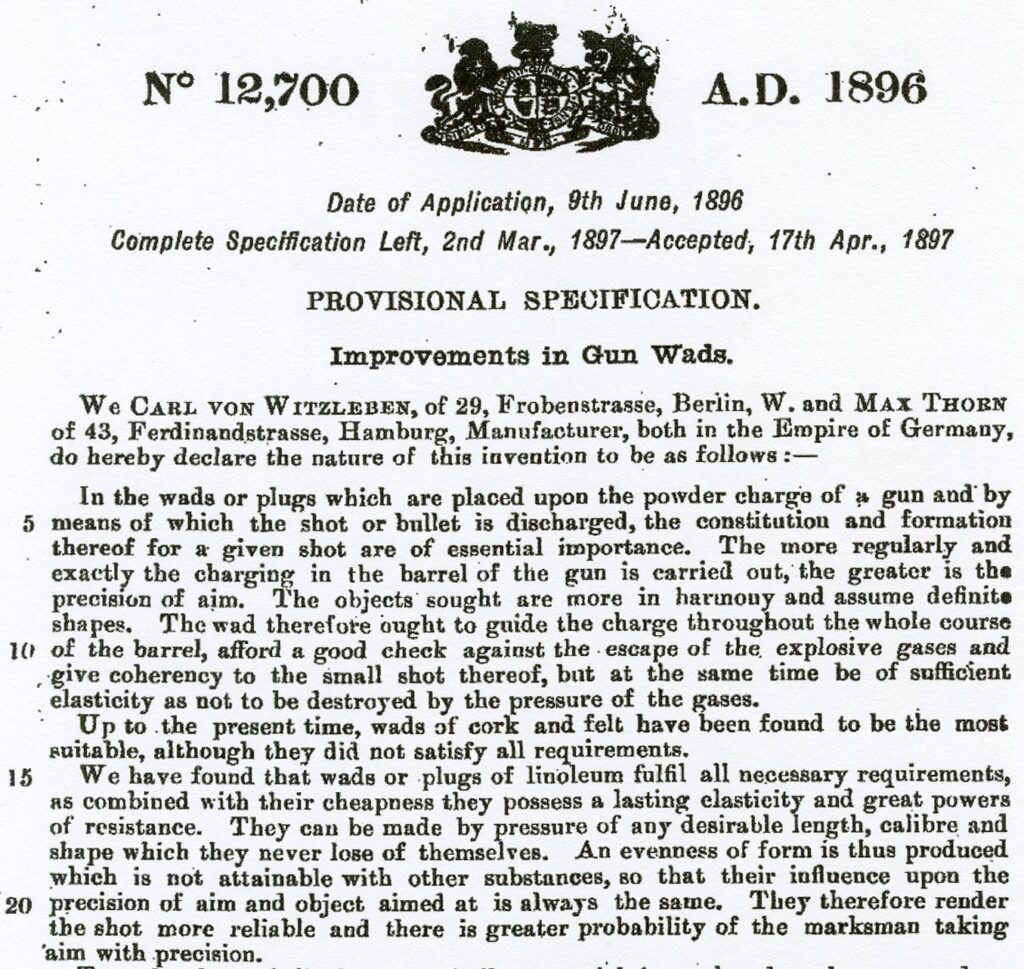
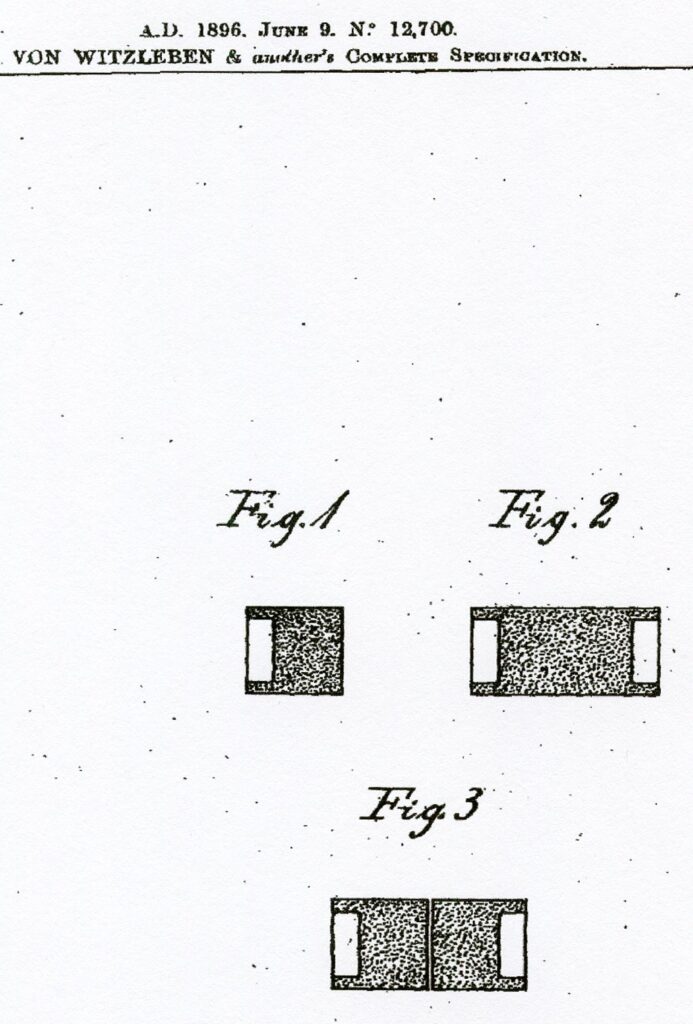
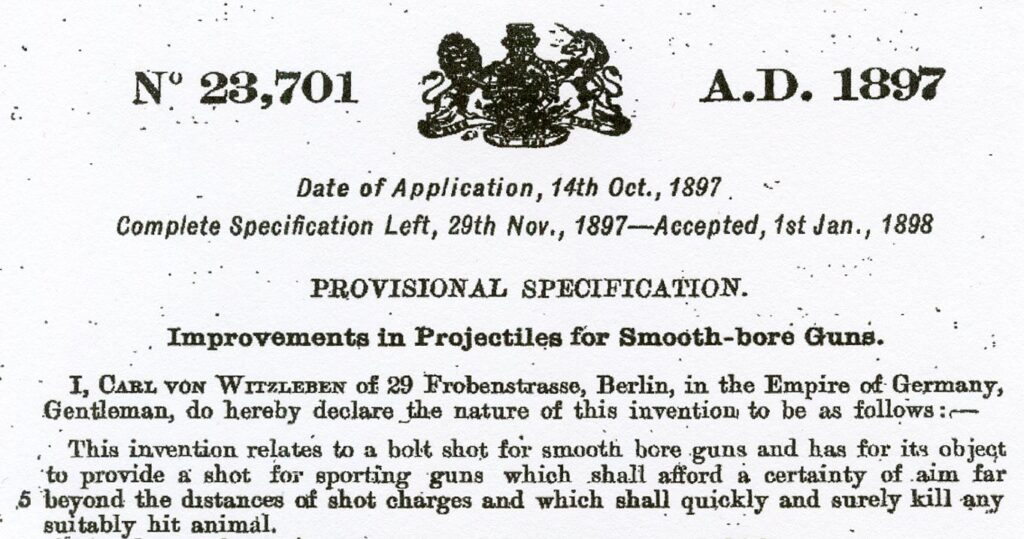
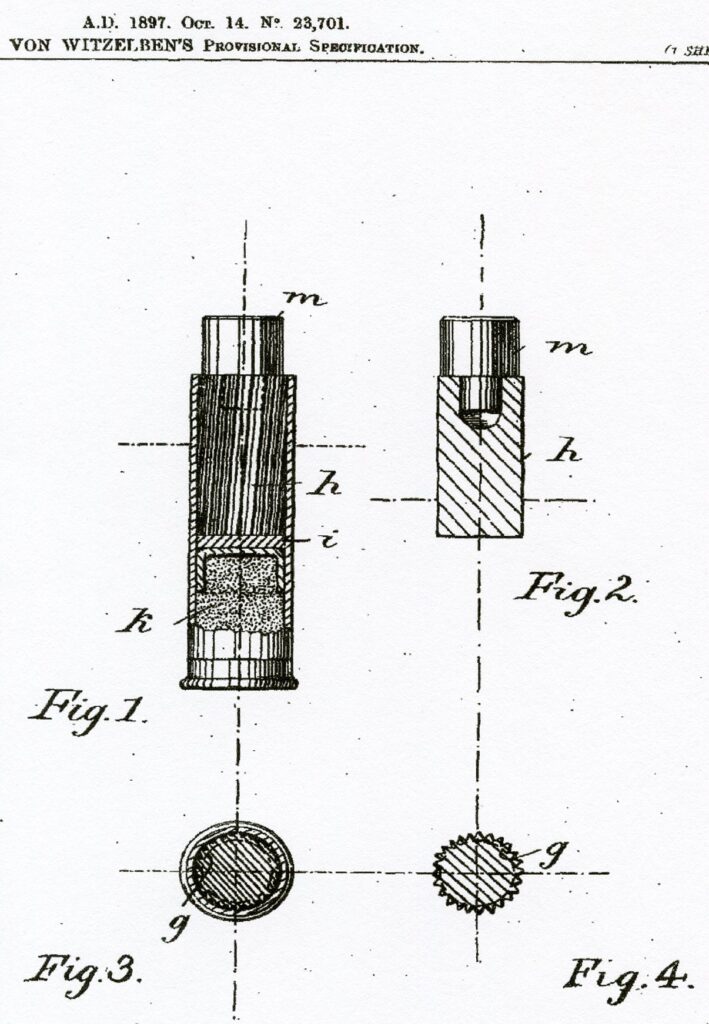
Obviously Carl continued to work on improving the design of his shogun slug, as shown by the following article which also mentions his association with the Gustav Genschow firm which produced the slug round.
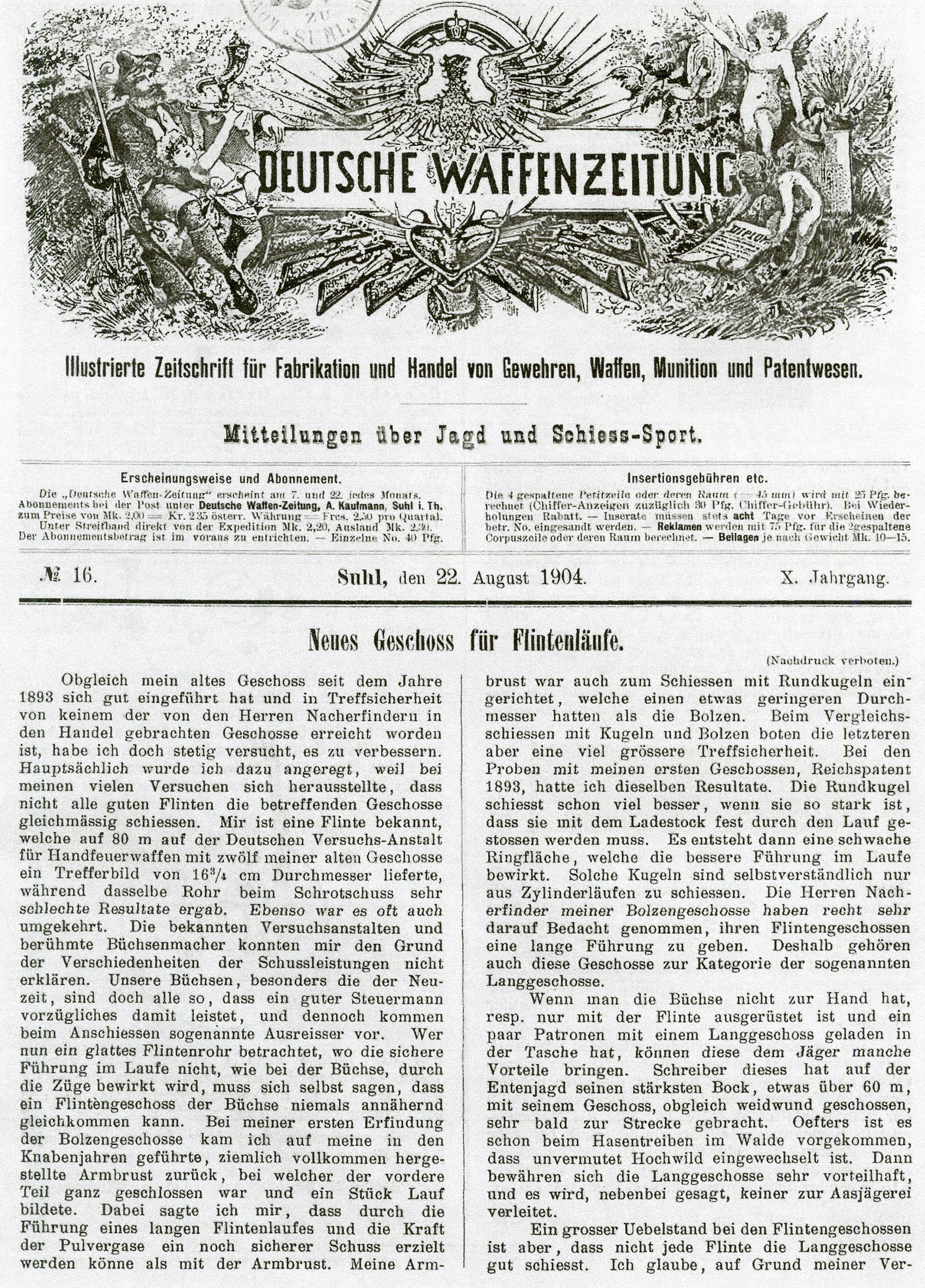
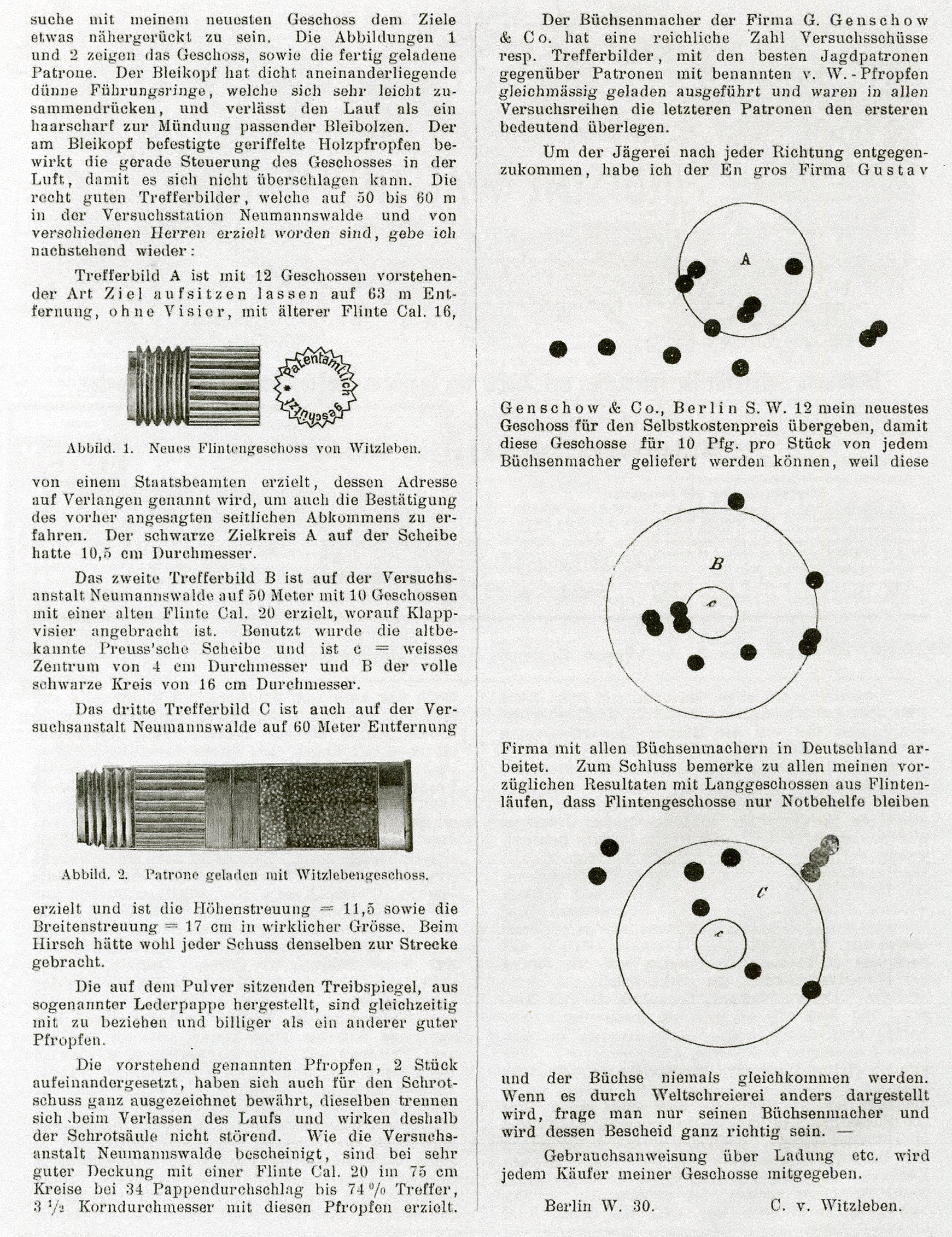
In 1905 Carl wrote an article for the Deutsche Waffenzeitung about an adjustable cheek piece which was designed by A. Stricker and offered to gun makers with the metal parts being available from the Gustav Genschow Co.
